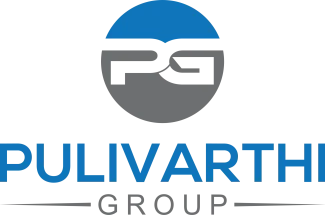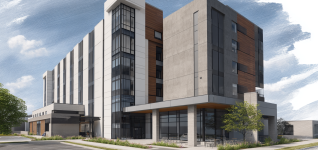The Hospital-at-Home (HaH) model is rapidly redefining how healthcare providers deliver services in the United States. This innovative approach offers patients the opportunity to receive hospital-level care in the comfort of their homes, thereby enhancing their overall experience. As the landscape of healthcare continues to change, it is crucial for home health care providers, health systems, and policymakers to understand the implications of this model, particularly as the expiration date for the waiver program looms in September 2025. To maximize the potential benefits of this model, stakeholders must support its extension.
Understanding the HaH Model
The HaH model is designed to provide appropriate medical care to patients at home instead of traditional hospital settings. This transition not only aims to improve patient outcomes but also seeks to alleviate the burdens faced by healthcare facilities. By providing services such as home health care and home care assistance, the model helps in reducing hospital readmissions and fostering independence among patients, especially seniors who often prefer receiving care in familiar surroundings.
Several healthcare systems have already begun adopting HaH models, demonstrating notable success. For instance, Johns Hopkins Medicine implemented its HaH program, which led to a significant reduction in hospital-acquired infections and shorter hospital stays. According to a study conducted by the New England Journal of Medicine, patients receiving care at home reported equal or higher satisfaction compared to those in hospital settings.
Key Benefits for Home Health Care Providers
For home health care providers, embracing the HaH model presents a myriad of advantages. Understanding these benefits can help in mitigating concerns about the future of the waiver programs:
- Enhanced Patient Satisfaction: Patients who receive care at home often articulate higher satisfaction due to increased comfort and personal autonomy. This sentiment not only boosts patient morale but also enhances provider reputation.
- Cost-Effectiveness: Providing care at home generally reduces the overhead costs associated with running traditional hospitals. Such savings can be redirected towards improving service quality and expanding care offerings.
- Flexible Care Models: The HaH model allows providers to implement a more flexible approach to care, tailoring services to individual patient needs, thereby enhancing the overall quality of health care delivery.
Challenges and Solutions
Despite the benefits, several challenges accompany the HaH model. The concerns about the future of waiver programs create uncertainty among providers. The following outlines key challenges along with actionable solutions:
- Regulatory Uncertainties: Providers may face barriers due to fluctuating regulatory environments. Staying informed about policy changes and actively engaging with policymakers can mitigate these uncertainties.
- Integration with Traditional Health Systems: Successfully integrating the HaH model with existing hospital services can be difficult. Collaborative partnerships between hospitals and home health care agencies can foster a more seamless transition.
- Provider Training and Resources: Adequate training for home health aides is critical. Investing in continuous education will equip providers with the necessary skills to deliver high-quality home care.
The Importance of Advocating for Waiver Extensions
The impending expiration of the HaH waiver program emphasizes the need for continued advocacy for its extension. Support from various stakeholders, including health systems, providers, and policymakers, is essential for lasting change. Here’s why advocating for these extensions is crucial:
- Continuity of Care: Developers must strive for consistent quality of care, and extending waiver programs would ensure that necessary reimbursements continue alongside service delivery.
- Broadened Access to Healthcare: Waiver extensions will enable more patients to access critical health care services at home, thus contributing to better health outcomes for various populations.
- Enhanced Knowledge Sharing: Extended programs foster environments where providers can learn from one another, enhancing the overall knowledge base and efficacy of home health care services.
Data-Driven Insights: The Future of HaH Models
Future projections indicate continued growth for HaH models in healthcare. Research from the Centers for Medicare & Medicaid Services (CMS) reveals that the HaH initiative can reduce healthcare costs by up to 30% while enhancing patient outcomes. These statistics underscore the significance of integrating the HaH model into broader healthcare strategy.
Furthermore, according to a report by the American Medical Association (AMA), the rise in telehealth and technology-driven patient monitoring solutions provides fertile ground for the HaH model to thrive. This evolution facilitates real-time monitoring and improves communication between patients and providers, significantly contributing to effective care delivery.
Building a Supportive Infrastructure for HaH Providers
To effectively support the continued growth and success of the HaH model, home health care agencies must establish a solid infrastructure. Here are some steps providers can take to enhance their operational capabilities:
- Invest in Technology: Adopting digital health solutions can streamline operations and improve patient monitoring. Consider implementing platforms that integrate telehealth services, appointment scheduling, and electronic health record (EHR) systems.
- Enhance Staff Expertise: Prioritize training and development for home health aides. By equipping staff with necessary skills and knowledge, agencies can ensure quality care is consistently delivered.
- Improve Communication Networks: Establish strong communication channels between home health providers, hospitals, and patients. Open lines of communication foster trust and ensure that care continuity remains intact.
Conclusion: Embracing the Spirit of Change
The healthcare landscape is evolving rapidly, and the Hospital-at-Home model represents a significant shift in how care is delivered. By understanding its benefits and addressing the challenges ahead, home health care providers can effectively navigate this new terrain. The expiration of the waiver program serves as a timely reminder for stakeholders to advocate for its extension, ensuring that patients can continue to access critical health services in their homes.
In this time-sensitive context, we urge all home health care providers, health systems, and policymakers to come together and support the extension of HaH waiver programs. Embracing this model fosters a more efficient healthcare delivery system and leads to better health outcomes for all.
“`
















